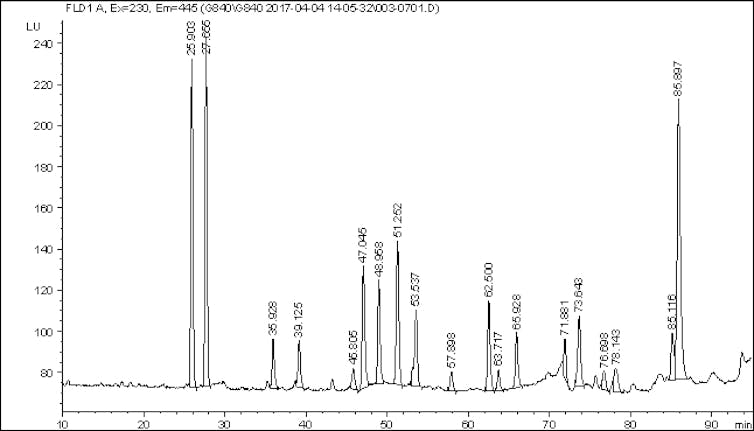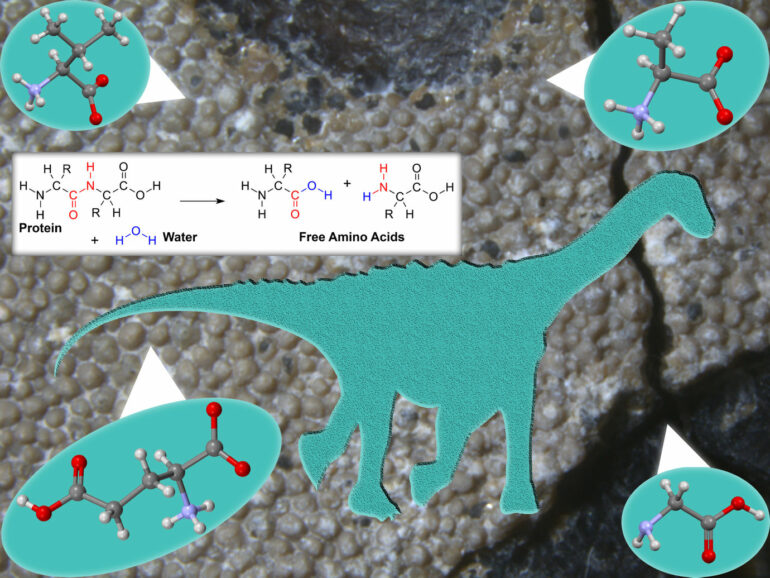As a scientist, lab work can sometimes get monotonous. But in 2017, while a Ph.D. student of paleobiology at the University of Bristol in the U.K., I heard a gleeful exclamation from across the room. Kirsty Penkman, head of the North East Amino Acid Racemization lab at the University of York, had just read the data printed off the chromatograms and was practically jumping up and down.
The instrument had detected telltale signatures of ancient amino acids in eggshell. Amino acids are the building blocks that make up protein sequences in living organisms. But this wasn’t just any eggshell; it was a fossil from a titanosaur, a giant herbivorous dinosaur that lived about 70 million years ago.

The chromatograph printout that Kirsty Penkman saw. Each peak represents an amino acid detected by the instrument during the analysis.
Evan Saitta
Not much organic material survives over millions of years, which limits scientists’ ability to study the biology of extinct organisms compared to modern ones, whose proteins and DNA can be sequenced. As Penkman’s enthusiasm suggested, these amino acids were extraordinary.
In fact, this result came unexpectedly amid our team’s efforts to test claims of near-pristine protein preservation in dinosaur bone. I had brought various fossil bones to Penkman, but the results suggested no original amino acids had been preserved, and that they were even contaminated by microbes from the environment they’d been buried in.
Testing eggshell fossils was not even in our original research plan.
Orphan fossil fragments
However, I had just seen that my colleague Beatrice Demarchi, Penkman and their team had detected short protein sequences in 3.8-million-year-old bird eggshell. I predicted that if dinosaur eggshells didn’t preserve any original proteins, then their bones likely wouldn’t preserve any either, and wanted to see whether that was the case. Luckily, we had a source of dinosaur eggshell.
Around 2000, many eggshell fragments were illegally exported from Argentina into the commercial market. As a fossil-obsessed child, I was even gifted a coin-sized fragment from a U.S. mineral store. Penkman and I tested that fragment, as well as another fragment from a European museum’s gift shop.
These fossil fragments in some ways gained scientific value because they didn’t belong to any museum collections. We didn’t have to worry about damaging them during the analysis. To our surprise, we had stumbled upon a rare opportunity to study ancient organic remains from a dinosaur.
Amino acids in eggshell
Prompted by this initial discovery, our large, international team analyzed more dinosaur eggshells from Argentina, Spain and China, using a wide variety of techniques. Although some eggshells preserved amino acids far better than others, the evidence overall suggested that these molecules were ancient and original, possibly ranging from 66 million to 86 million…



